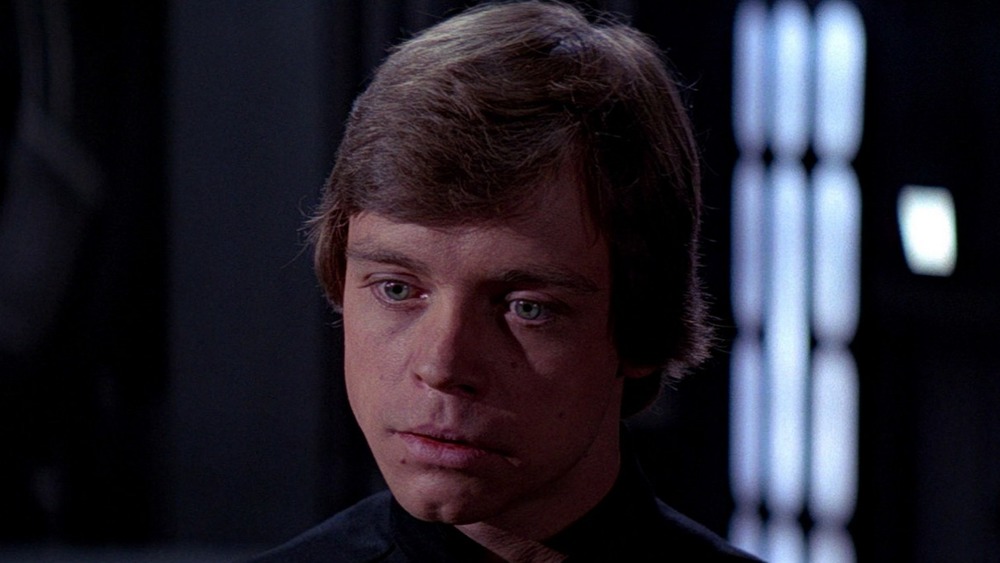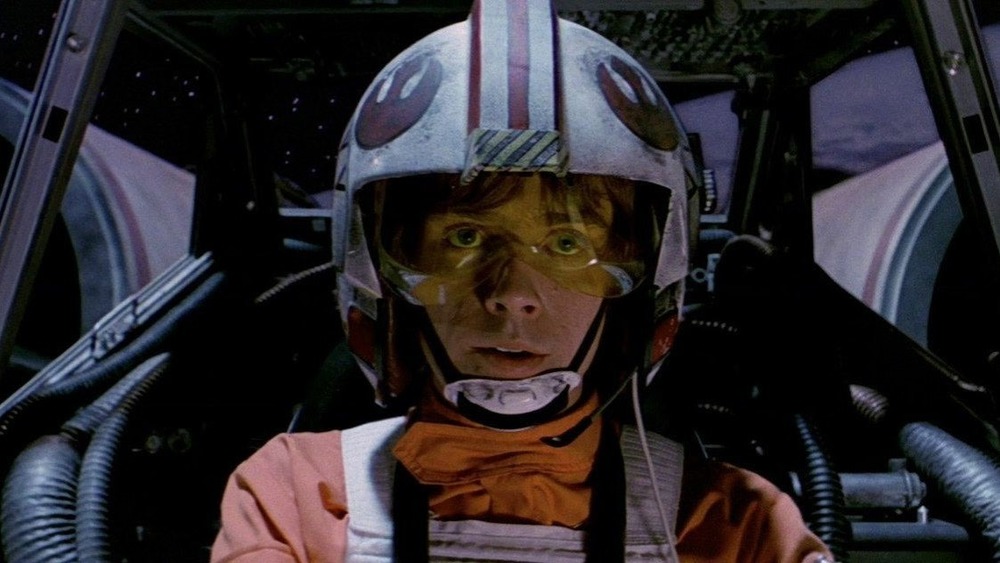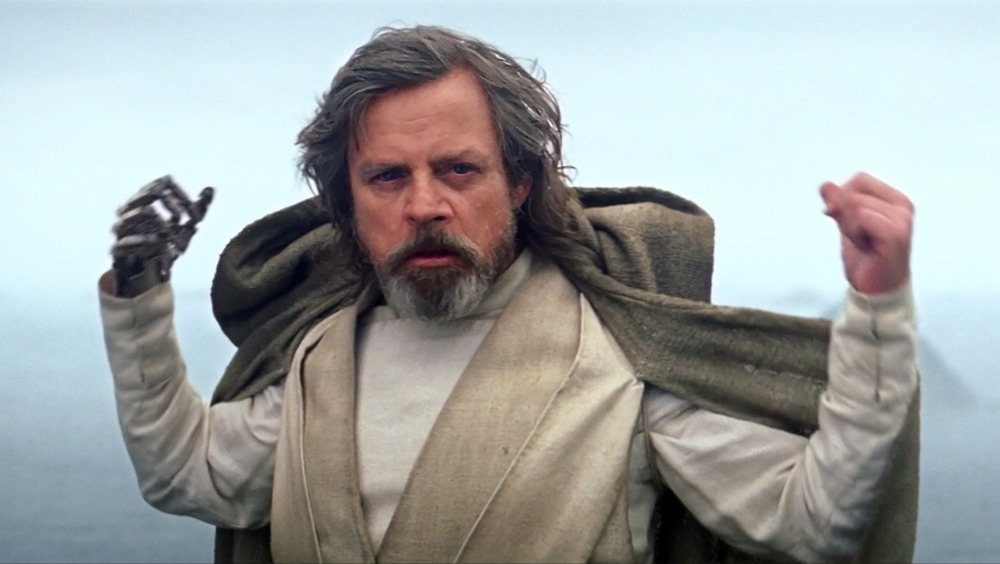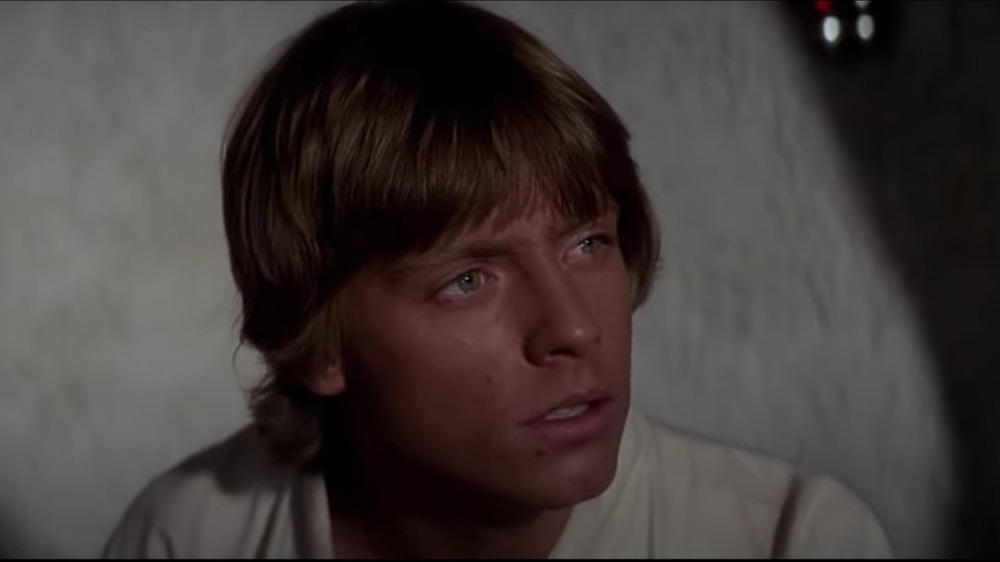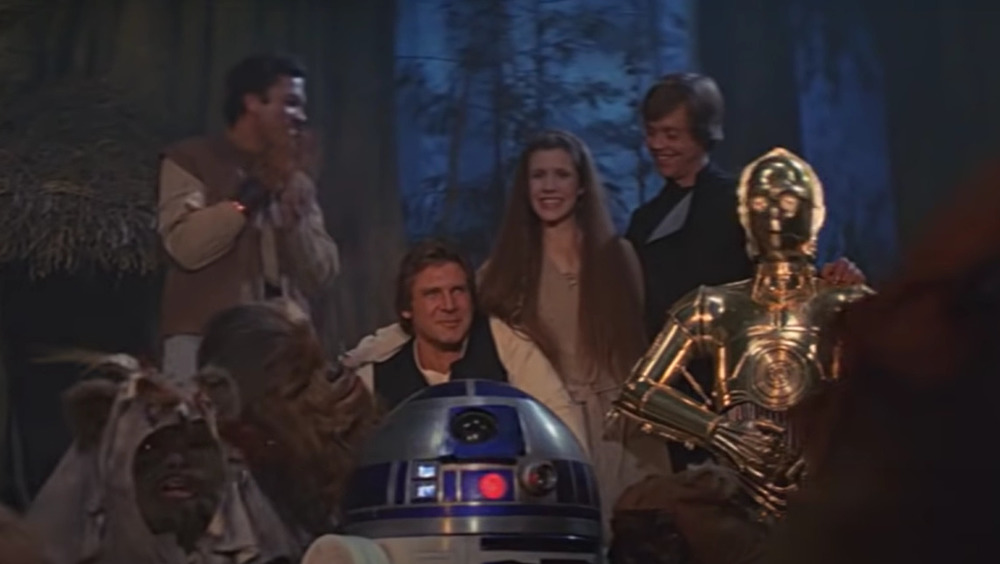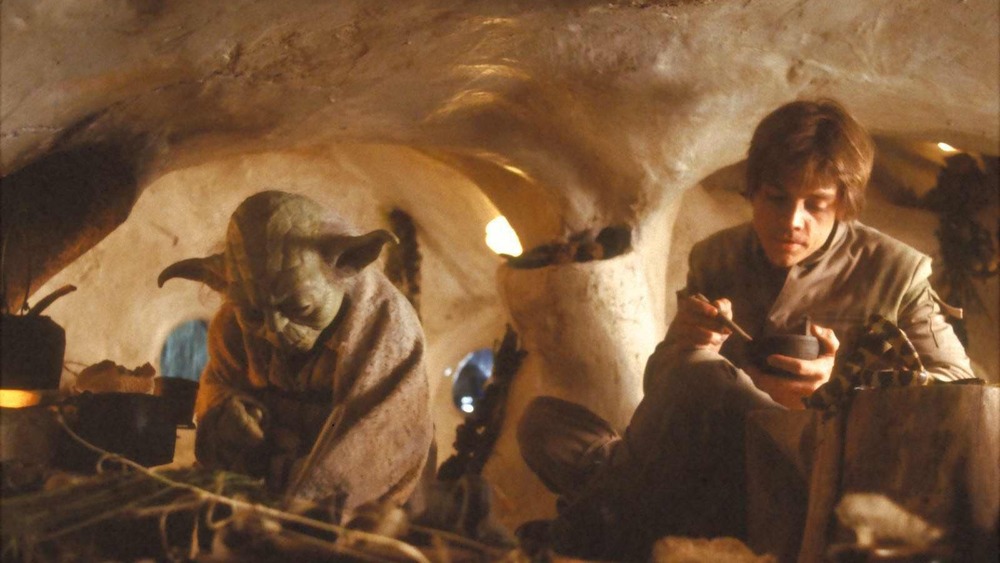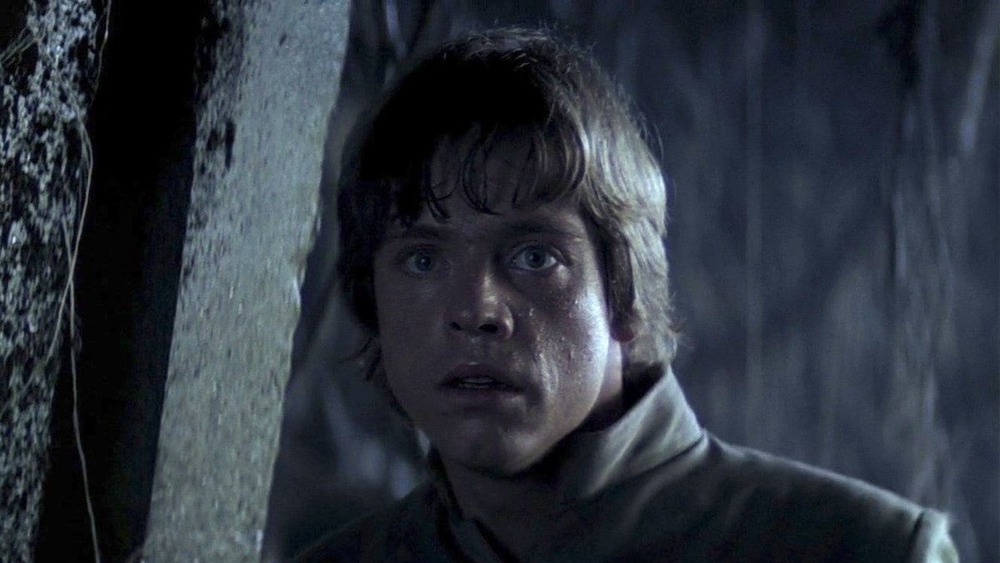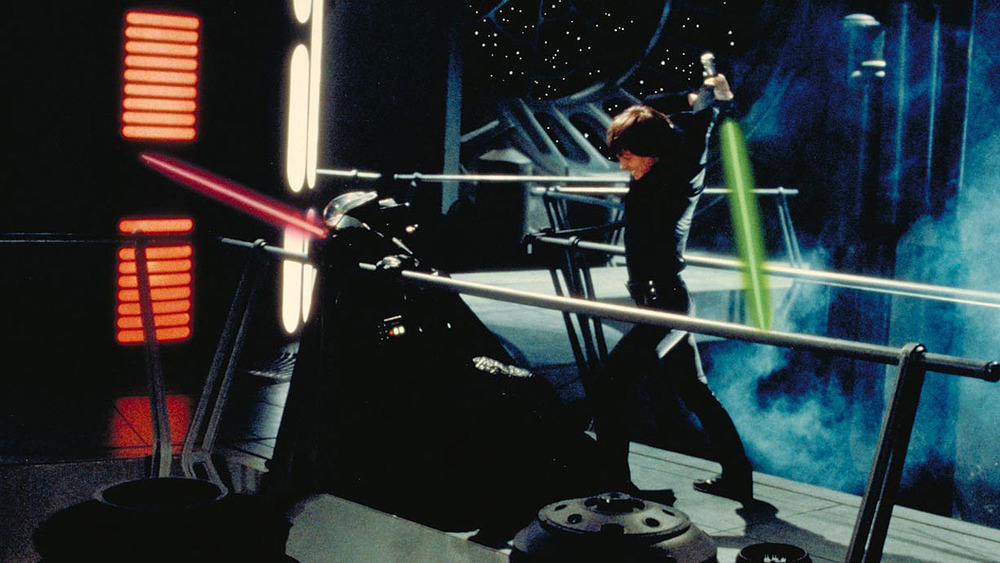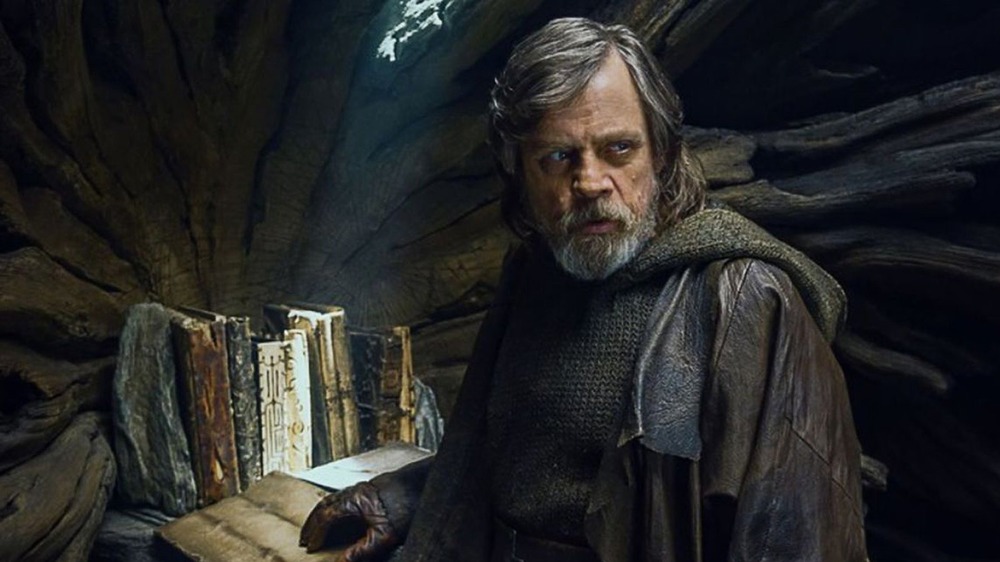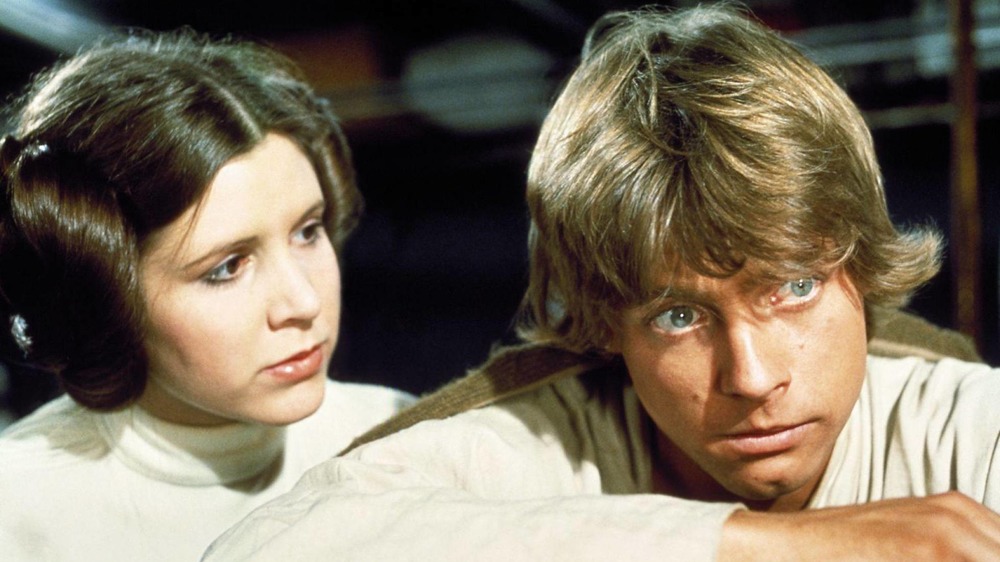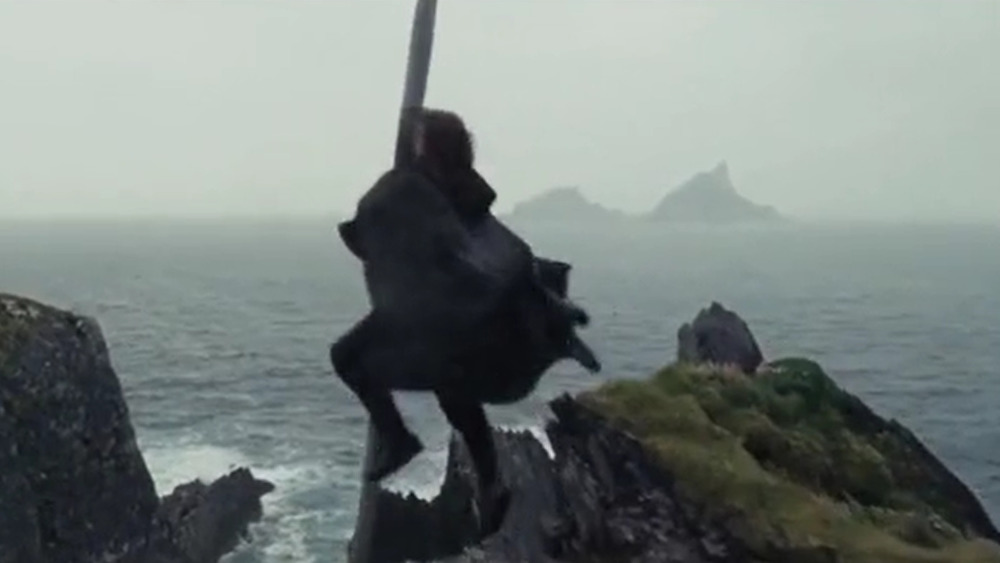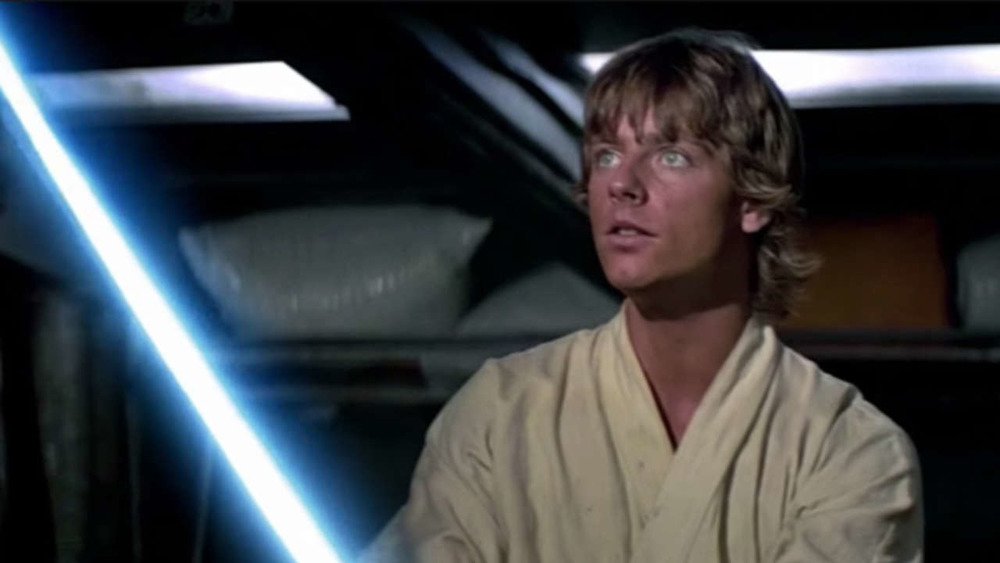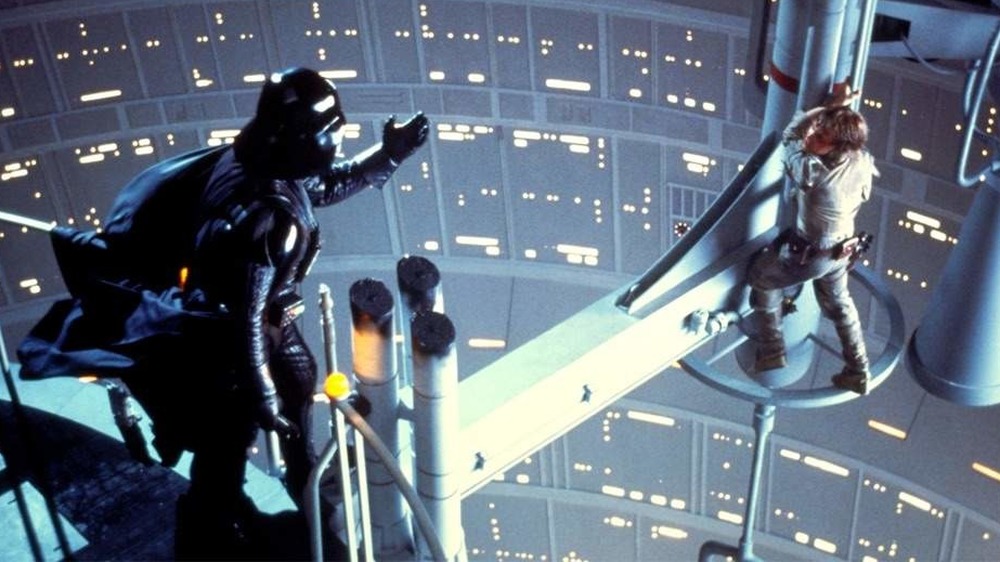Rules Luke Skywalker Has To Follow In The Star Wars Universe
Luke Skywalker started it all. Star Wars is one of the most influential film franchises of all time and one of the most lucrative, second only to the Marvel Cinematic Universe — which has twice as many films. Its impact on pop culture is incalculable and that all began with a simple farm boy staring wistfully at the setting suns from his barren farmhouse. While Luke is only present as an infant in the last of the prequels, and The Rise of Skywalker makes the argument that the Skywalker saga is really the story of the Palpatines, Luke is still the central hero to the legendary space opera.
While George Lucas famously used Joseph Campbell's archetypes as the basis of his characters, Luke Skywalker is his own man, even if he's somewhat defined by his hero's journey and plenty of family baggage. The son of Anakin Skywalker is a man of conflicts, in some ways stronger and in other ways weaker for not having grown up in the Old Republic's Jedi system. The rules that define Luke speak to his blend of natural talent, emotional conflicts, family bonds, and a life lived in exile, as the only Jedi left in the galaxy.
Luke can pilot anything really well
When Luke first hears about his father from Obi-Wan Kenobi in Star Wars (a.k.a. A New Hope), the old Jedi tells Luke what a great pilot his father was, adding, "I understand that you've become quite a good pilot yourself." When Luke later prepares for the Battle of Yavin, his childhood friend Biggs tells Red Leader Garven Dreis that Luke's the best bush pilot in the outer rim territories, which is proven true when Luke destroys the Death Star and is one of the few pilots to survive the attack.
Luke is not just a leading X-Wing pilot but, on the ice planet Hoth in The Empire Strikes Back, a skilled snowspeeder pilot. When he and Leia jump on speeder bikes on Endor (in Return of the Jedi), Luke easily outmatches the imperial scouts. As the second Death Star explodes, he single-handedly flies shuttle ST-321 away from the battle station just in time. In various canon comics he pilots an assortment of cruisers. For a farm boy with no formal training, Luke can pilot any vehicle with the best of them. That makes sense, since Anakin Skywalker was possibly the greatest hotshot in the galaxy throughout the prequels and Clone Wars, regardless of what he was flying.
Clothes make the man
Star Wars presents an interesting universe where many characters wear the same outfits for years, in some cases throughout the whole series. Han Solo's outfit is so set that Lando Calrissian even dons a version of it when he takes over the Millennium Falcon at the end of The Empire Strikes Back. Some characters like Luke's mom Padme Amidala regularly change outfits, but otherwise Luke has the most wardrobe changes, especially in the original trilogy. And more than anybody else, his outfits are a reflection of who and where he is in his life.
Luke starts off as a farm boy in ratty, loose, light-colored togs that look almost like the sand around him. Official uniforms aside, Luke's clothes get darker and more serious as he evolves. In The Empire Strikes Back Luke trains on Dagobah in a gray (or dirty beige) tank top and fights Vader in gray (dirty beige?) fatigues, symbolizing his journey from lightweight farm boy to brooding Jedi. Once he deems himself a Jedi, Luke wears all black and adds the Jedi hood and cape, showing how grave his journey has become. When we finally see Luke on Ach To in The Force Awakens, he has returned to the light colors of his youth but uses a Jedi pattern, showing he has the experience and training of a Jedi but is still that same lost boy. When he trains Rey, he wears his Jedi black again as he returns to the Force that had hurt him so much.
He's always curious
Luke's inquisitive face is one of his most distinctive looks, and he's quick to ask Obi-Wan as well as Yoda whatever question pops into his mind. Luke decides to investigate the cave on Dagobah before Yoda even suggests it. His curiosity about the Jedi Order has a strong pull throughout the comic books, leading him to look for Jedi temples. Obviously in The Mandalorian Luke had been curious enough about the message sent out by Grogu to search for and save the youngling.
Luke's curiosity is part of his restlessness, a restlessness that's palpable during his childhood on Tatooine. He wants to see what else is out there. He also realizes there's so much he doesn't know about. And when Obi-Wan tells him about the Force, the mention of this greater power piques his interest enough to make him decide he wants to train to become a Jedi after the deaths of his foster parents.
Family and friends are everything
Luke never gives up on his father, turning himself over to the Empire just so he can try to turn Darth Vader back to the light. He loses control of his emotions in his battle with Vader only when Vader mentions turning his sister, Leia, to the dark side. He feels like he's failing to train his nephew, Ben, properly and this failure leads Luke to act out of fear, which then drives him into seclusion. Even early in A New Hope, Luke hurries towards what could be certain doom when he realizes stormtroopers are likely attacking his foster parents, Uncle Owen and Aunt Beru.
As for friends, the only time Luke looks visibly shaken in the Battle of Yavin is when his childhood friend Biggs Darklighter is killed. He cuts his training with Yoda short to try and save his friends at Bespin. He spends a lot of time training and then planning a daring rescue of his friend Han from Jabba the Hutt despite the fact that the Alliance is still in the thick of war with the Empire. Even Emperor Palpatine notices that Luke's faith in his friends is his weakness — although that same faith and affection help keep him on the light side.
A humble hero
Han is obviously an amazing pilot and a good fighter, but he's also quick to let everybody know that. A haughty Leia talks down to Luke and Han and immediately takes charge, even though they're rescuing her. Luke never asks for adulation or appreciation, never acts like he has all the answers. He only wants to help the people he cares about and become stronger. This is a part of his personality that echoes the warrior monk culture that inspired George Lucas' Jedi order.
When Luke thanks Han for rescuing him on Hoth, Han says, "That's two you owe me, Junior." In Return of the Jedi, Han thanks Luke for saving him from Jabba and Luke just smiles at the acknowledgement.
When Luke first meets Yoda, and doesn't yet know the strange little creature is the Jedi master, he accompanies Yoda to his humble home. While a guest, Luke eats the meager gruel Yoda offers him, casually pushing a snake out of the way, and while his face shows he doesn't like the soup he at least pretends to eat it without so much as a peep of disgust. That shows a respect grounded in humility, no doubt in part coming from his own humble upbringing.
Contrary to what he once said, Luke's very afraid
Luke tells Yoda on Dagobah that he's not afraid. Yoda replies, "You will be." And yes, once Luke knows what's really happening, he's very afraid. Luke's fear first makes itself known when he runs into the manifestation of Vader in the cave. When the helmet explodes and Luke sees his own face, that's a pretty basic depiction of Luke's own internal fear of turning to the dark side. Luke's fear overpowers him again a little later when he has a vision of Han and company in trouble at Bespin. He can't shake that fear enough to continue with his training, and can't even calm down until his X-Wing is taking off.
Luke loses his composure in front of Emperor Palpatine in Return of the Jedi when the Emperor reveals that the second Death Star is fully armed and operational. We see Luke quaking in fear like a scared kid as he looks out the window at his allies duking it out in space with the Empire.
And when training his own Jedi pupils, Luke attacks his sleeping nephew because he's afraid of Ben's growing dark side — which actually leads Ben away from the light.
Luke is very afraid. And as Yoda warns us in The Phantom Menace, fear is the path to the dark side — mainly because fear leads to anger.
Luke's also angry
Luke first airs his frustration in a now-famous whine to his Uncle Owen that he was going to Toshi Station when his uncle insists on him doing his chores. He then shows his frustration that he can't leave to join the Academy like his friends with a sarcastic comment to his aunt. But this frustration is really the venting of a deep-seated anger. When Luke sees Obi-Wan struck down by Vader, he blasts away at stormtroopers with a furious intensity. Luke gets angry and impatient multiple times with Yoda on his first trip to Dagobah. He barks at Vader with a guttural intensity on the platform at Cloud City about how he'll never join the man.
Luke's anger comes out again while fighting Vader. He starts swinging his lightsaber in rage, doing exactly what he should not do and giving into the dark side. It makes him powerful enough to defeat Vader before he can get himself back under control. Luke's anger is just below the surface throughout the whole series, so much that he is a bitter old curmudgeon when Rey finally meets up with him. But Luke is mindful enough of his anger that he is able to always find his way back to the good side.
Luke, the eternal student
When Luke meets Obi-Wan, he begins his Jedi training. although he probably didn't realize he'd be training for the rest of his life. And other than some brief scenes with Obi-Wan and Yoda, most of that training happens offscreen. In the movies we know it happens since his skills notably improve from film to film. In the comics we get to follow Luke on his continuous quest for self-improvement in the way of the Force. After the Battle of Endor, Luke searches the galaxy for various Jedi scriptures from which he can study and learn more about his skills since he has to teach himself. When he finds the treasures preserved by Jedi librarian Jocasta Nu, Luke delves into Jedi writings and holocrons.
Eventually we find Luke Skywalker in seclusion in The Last Jedi, having closed himself off from the Force. When he finally reconnects, Yoda visits him from the spirit world and talks about the collection of ancient Jedi books Luke has gathered and preserved, gently ribbing Luke for having read and cared so much for the dry, ancient texts — a sign that even after having sworn off being a Jedi, Luke couldn't help but continue studying.
Luke, the little brother
Luke is technically older than Leia. Yet throughout the series he always seems like the younger one, or at least the less mature. Luke is a naïve farm boy when he first meets Leia, who's already a battle-hardened leader. While Luke spent his youth harvesting moisture and hot-rodding around the Tatooine desert, Leia had already been a major player in the Rebellion for years. When she first met up with the gang from Rebels, a show which starts five years before the Battle of Yavin, she's already stealing ships for rebel cells while pretending to be just another dignitary.
As time goes on, Leia takes on larger roles of leadership and responsibility in the Alliance. After the battle on Hoth, Luke skips meeting with the fleet again to train with Yoda. In the comics, he has plenty of personal missions between movies while Leia mostly keeps to her responsibilities as an Alliance leader. On Endor she suggests he leave, feeling like the older sister telling her younger brother to save himself.
While Luke is an integral part of the Rebel Alliance, he also often goes off to do his own thing. When things go sour with Ben Solo, he runs away completely, leaving Leia to shoulder all the responsibility of what they built together as well as to form and head the Resistance by herself. Leia's shouldering of responsibilities may not show her to be "older," but it shows her to be more mature.
Luke needs to prove himself, even at the end
From the start Luke seems to constantly need to prove himself. He complains to Obi-Wan that he's ready to train when Yoda says he isn't. He takes on Vader in The Empire Strikes Back because he wants to show everybody he's ready to take on the challenge, even though he isn't ready. He gets goaded into fighting Vader again in Return of the Jedi because Yoda says that's a requisite before Luke can call himself a Jedi.
All throughout his life, Luke constantly pushes himself to prove what he can do. At the end of his life, when Rey begins training with Luke, he does some showing off — like swinging on that large pole over a rocky chasm. Can't he find an easier way to fish? Even in his old age he feels the need to demonstrate his strength.
Finally Luke confronts Kylo Ren in The Last Jedi and mocks the barrage of AT-M6 lasers before giving Kylo one last lesson during their duel. In part it was to allow the few remaining rebels to escape. But mostly it was to show, once and for all, how he had proven himself worthy of being one with the Force.
Shaggy-haired Hero
The Star Wars universe seems to be all about short hair for its men. While Jedi Masters eventually sport their own flowing locks, that was only after enduring years with a shaved head, while the strongest, like Yoda and Mace Windu, are bald. But Luke always has the longest hair in the room. Han's is short, even when it gets a little scruffy-looking. All the other rebel soldiers and officers have close cuts. And of course the imperials wear their hair short and tight, like slick galactic bankers. But Luke always has a longer do.
In A New Hope he's got the shaggiest hair in the room. In The Empire Strikes Back and Return of the Jedi he at least sports bangs and a borderline mullet, and never once does it look like he's combed those long locks. Finally, as an old hermit he's got a flowing light brown mane. When Obi-Wan did his Jedi in hiding thing, he kept it high and tight until the end. Which might be why Luke decides to trim up the hair before his final great battle with Kylo and the AT-M6es — though it's still longer than Obi-Wan's.
Luke can't be killed
Luke can't be killed, no matter what he or anybody else does. In A New Hope, Vader opens fire on Luke's X-wing before being knocked off course by his fellow TIE fighter after Han's reappearance. How did Vader miss since Luke was in the crosshairs? Later, Luke jumps off the Bespin platform into the abyss and magically gets sucked into a tube which — conveniently enough — drops him onto an antenna he can hang from. On Hoth he wakes up in the wampa's cave and not only has the creature decided to eat Luke's tauntaun first, he didn't even die from getting a wampa claw to the face.
In the comics, Luke battles Boba Fett and Vader shortly after the Battle of Yavin, when he was still a clumsy kid with a lightsaber, and he survives. He even crashes his X-Wing into Vader's TIE Advanced, leading them both to crash on Vrogas Vas — two crashes which would have killed anybody else.
In Return of the Jedi, Emperor Palpatine's heavy lightning blasts don't kill Luke. Even when Kylo Ren blows him back with all the power inside him, Luke survives. Yes, Luke has the Force with him but so do many others — including nearly every Jedi wiped out by clone troopers armed with simple blasters.
Luke it seems can't be killed. In the end, he finally has to give himself over to the Force to pass into the spiritual world.
